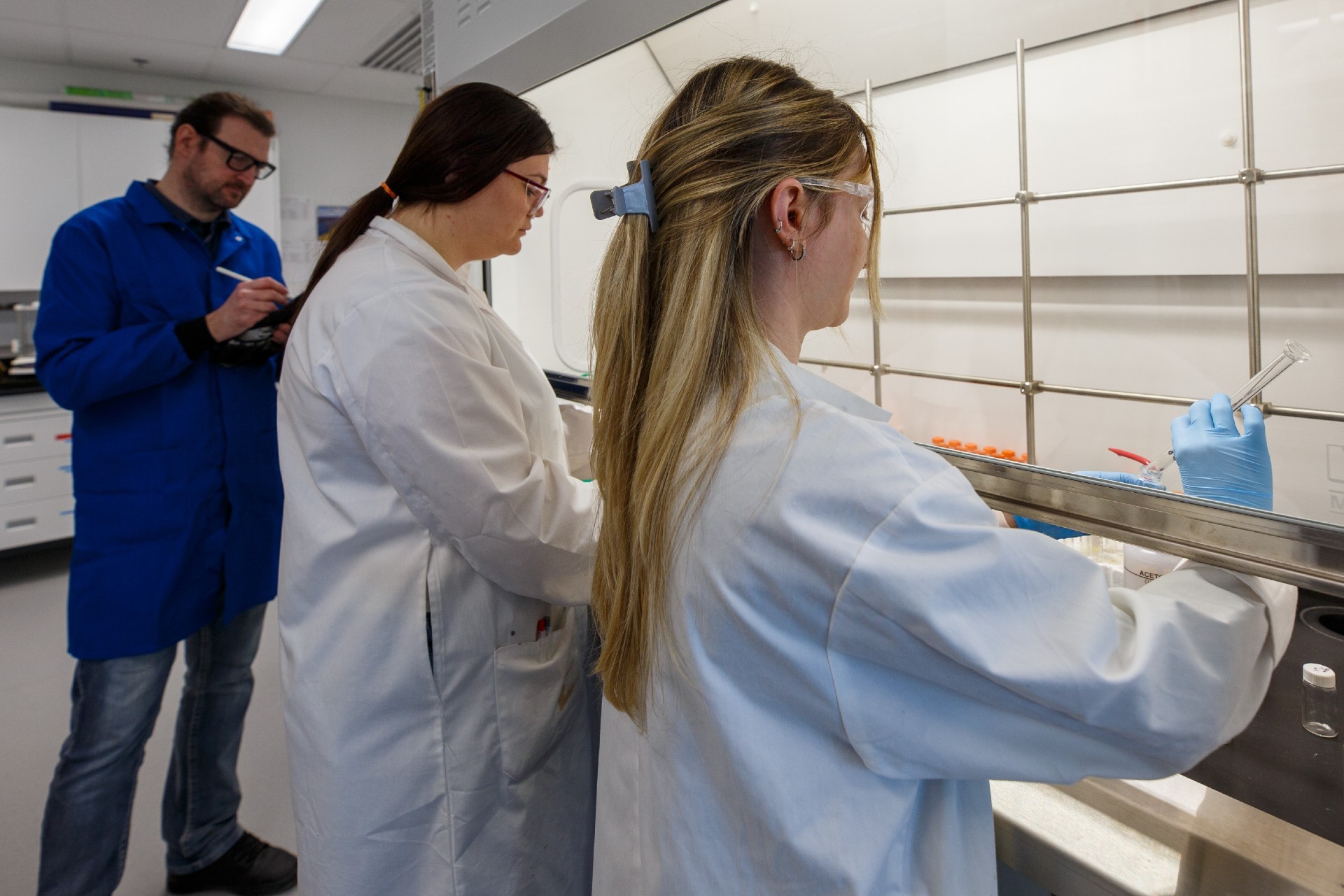Environmental, Health & Safety:
514-848-2424, ext. 4877
Laboratory ergonomics

Your comfort, health and productivity in the laboratory is affected by how you arrange and adjust your equipment. Follow the steps in this helpful guide to ensure you find the most ergonomic position while you work.
Body position/Posture
Lab stools, without a backrest, are appropriate for short periods of sitting. If sitting for more prolonged periods, a stool or chair with a backrest should be chosen.
Feet flat on the floor or on a footrest
Legroom under the bench should not be used for storage.
Workplace practices/processes
Rotate your tasks as much as possible to insert more variety of positions.
Stand up and stretch every 30 minutes.
Since most workstations are used by multiple users, take the time to adjust the seat height and lumbar support height, if present, of the stool.
Proper equipment
Place a footrest in front of chair if feet do not reach the floor after adjusting the seat for a healthy arm position.
Foot rings, if present on the stool, should be used only for short periods of sitting.
Remove/adjust armrests if they hinder work activities.
Body position/Posture
Adjust your workstation to keep your arm in the more neutral "handshake" position, shoulders relaxed, upper arm close to the body, elbows at 90 degrees or so, and your wrist in a neutral position.
When standing, raising the rack can assist taller individuals in achieving a healthier arm and spine position.
Workplace practices/processes
Keep tools and containers as close as possible, use a turntable if needed.
Share workload between right and left hands.
Rotate pipetting tasks with other tasks as much as possible.
Share the work between colleagues if needed.
Use the lightest touch possible when pipetting or ejecting tips.
Take a microbreak every 30 minutes of pipetting. Mild hand exercises and stretches can be beneficial.
Proper equipment
Use shorter pipettors and pipette tips that are easy to eject.
Choose pipettors that require minimal hand and finger effort.
Clean pipettors regularly to prevent sticking.
Use low-profile waste receptacles for used tips.
Automated processes, electronic or multi-channel pipettors are recommended for highly repetitive jobs.
Body position/Posture
Adjust your workstation to keep your arm in the more neutral "handshake" position, shoulders relaxed, upper arms close to the body, elbows at 90 degrees or so, and your wrists in a neutral position.
When standing, raising the rack with a small box can assist taller individuals in achieving a healthier arm and spine position.
Workplace practices/processes
Take the time to organize your workspace, placing what is needed for the task at hand at an easy arms’ reach. This will minimize repeated reaching. Consider a turntable if many materials are needed.
Arrange tubes to minimize reaching/twisting.
Share workload between right and left hands.
Take microbreaks every 30 minutes.
Alternate hands to open tubes.
Proper equipment
Use mixer rack instead of holding tubes by hand.
Use factory-approved forearm rests in biosafety cabinets to support arms during longer periods of work.
Body position/Posture
Position the microscope at the edge of the bench to avoid working with a forward head posture.
Adjust the ocular height to permit a neutral head posture and spine (head over the midline of the body).
Workplace practices/processes
Take frequent breaks to rest eyes and follow the “20-20-20 rule”: every 20 minutes, focus on an object at least 20 feet away for 20 seconds.
Keep scopes clean and in good condition.
Proper equipment
Add approved arm rests to reduce contact stress between forearms and hard edges, for longer periods of work.
If standing, raise the microscope so the eyepiece is at eye level, and use an anti-fatigue mat.
Body position/Posture
Maintain a neutral wrist position whenever possible.
Minimize the use of tools that require pinch grips.
Workplace practices/processes
Take microbreaks away from tool use every 30 minutes
Share the workload between right and left hands.
Proper equipment
Use the correct tool for each task.
Ensure tools are in proper working order and are the right size for your hand.
When possible, select tools with larger handles to minimize gripping effort.
Choose silicone covered handles for tools when possible.








